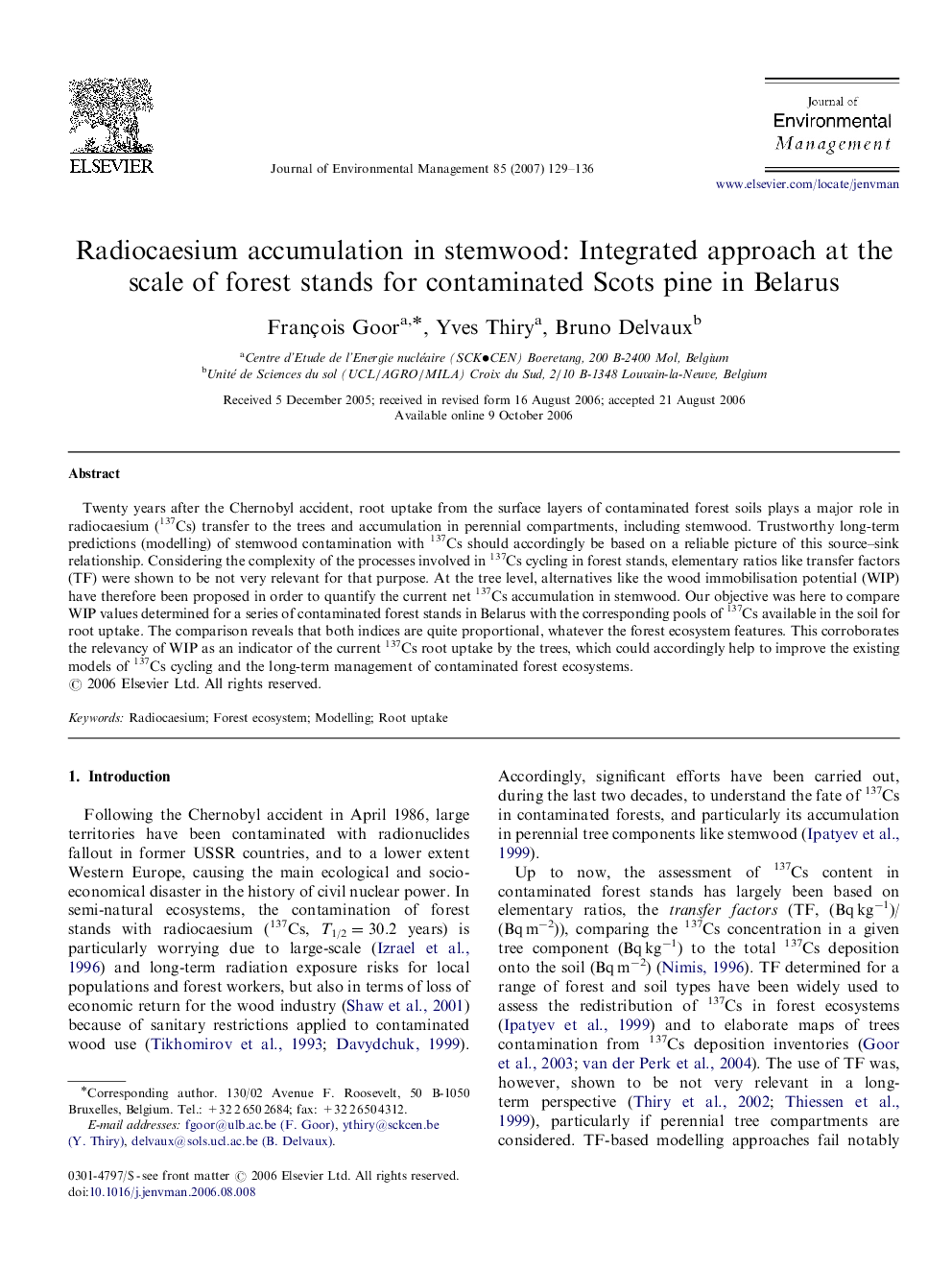| Article ID | Journal | Published Year | Pages | File Type |
|---|---|---|---|---|
| 1058586 | Journal of Environmental Management | 2007 | 8 Pages |
Abstract
Twenty years after the Chernobyl accident, root uptake from the surface layers of contaminated forest soils plays a major role in radiocaesium (137Cs) transfer to the trees and accumulation in perennial compartments, including stemwood. Trustworthy long-term predictions (modelling) of stemwood contamination with 137Cs should accordingly be based on a reliable picture of this source-sink relationship. Considering the complexity of the processes involved in 137Cs cycling in forest stands, elementary ratios like transfer factors (TF) were shown to be not very relevant for that purpose. At the tree level, alternatives like the wood immobilisation potential (WIP) have therefore been proposed in order to quantify the current net 137Cs accumulation in stemwood. Our objective was here to compare WIP values determined for a series of contaminated forest stands in Belarus with the corresponding pools of 137Cs available in the soil for root uptake. The comparison reveals that both indices are quite proportional, whatever the forest ecosystem features. This corroborates the relevancy of WIP as an indicator of the current 137Cs root uptake by the trees, which could accordingly help to improve the existing models of 137Cs cycling and the long-term management of contaminated forest ecosystems.
Related Topics
Physical Sciences and Engineering
Energy
Renewable Energy, Sustainability and the Environment
Authors
François Goor, Yves Thiry, Bruno Delvaux,
